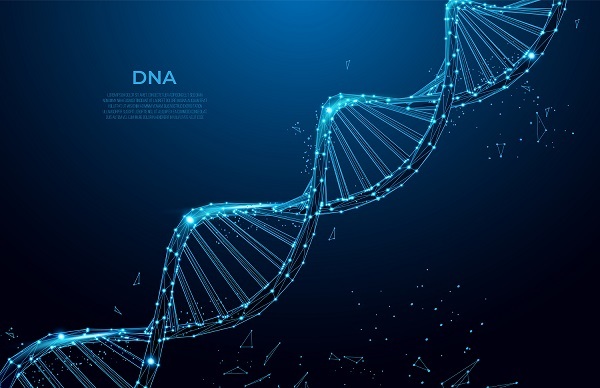
 Data Structure
Data Structure Networking
Networking RDBMS
RDBMS Operating System
Operating System Java
Java MS Excel
MS Excel iOS
iOS HTML
HTML CSS
CSS Android
Android Python
Python C Programming
C Programming C++
C++ C#
C# MongoDB
MongoDB MySQL
MySQL Javascript
Javascript PHP
PHP
- Selected Reading
- UPSC IAS Exams Notes
- Developer's Best Practices
- Questions and Answers
- Effective Resume Writing
- HR Interview Questions
- Computer Glossary
- Who is Who
DNA Supercoiling and Super Helical Stress
Introduction
DNA supercoiling is the twisting or coiling of the double helix structure of DNA, resulting in a strain on the molecule.
This strain is known as superhelical stress. Supercoiling is an essential process that occurs in all living organisms and is critical for a variety of cellular processes, including DNA replication, transcription, and repair.
We will discuss the mechanism of DNA supercoiling and the role of superhelical stress in DNA structure and function.
Mechanism of DNA Supercoiling
The double helix structure of DNA consists of two complementary strands of nucleotides, which are held together by hydrogen bonds between the nucleotide bases. DNA supercoiling occurs when the helix is twisted around its axis, leading to a strain on the molecule. The degree of supercoiling can be quantified by a topological parameter known as the linking number, which is the number of times one strand of DNA is wound around the other.

Supercoiling is classified into two types: positive and negative.
Positive Supercoiling occurs when the helix is overwound, resulting in an increase in the linking number.
Negative Supercoiling occurs when the helix is underwound, resulting in a decrease in the linking number. Both types of supercoiling are critical for DNA structure and function.
The process of DNA supercoiling is facilitated by enzymes called topoisomerases. These enzymes break and re-join the DNA strands, allowing the helix to twist or untwist. Topoisomerases are divided into two classes: type I and type II.
Type I topoisomerases break a single strand of DNA. whereas,
Type II topoisomerases break both strands. Both types of topoisomerases are involved in regulating the supercoiling of DNA.
Role of Superhelical Stress in DNA Structure and Function
Superhelical stress is the energy stored in the DNA molecule because of supercoiling. This stress is a critical determinant of DNA structure and function. Superhelical stress affects the stability of the double helix and influences the interactions between DNA and proteins.
The degree of superhelical stress in DNA affects the stability of the double helix. Positive supercoiling increases the energy required to break the hydrogen bonds between the nucleotide bases, making the DNA molecule more stable. Negative supercoiling decreases the energy required to break the hydrogen bonds, making the DNA molecule less stable.
Superhelical stress also plays a role in DNA-protein interactions. Proteins that bind to DNA, such as transcription factors and histones, are affected by the degree of superhelical stress in the DNA molecule. Positive supercoiling increases the accessibility of DNA to proteins, whereas negative supercoiling reduces accessibility.
Superhelical stress is critical for a variety of cellular processes, including DNA replication, transcription, and repair. DNA replication requires the unwinding of the double helix, which results in the generation of positive supercoiling ahead of the replication fork and negative supercoiling behind the fork. The generation and resolution of supercoiling are critical for the proper replication of DNA.
Transcription, the process by which RNA is synthesized from DNA, also requires the generation of supercoiling. RNA polymerase, the enzyme responsible for transcription, generates positive supercoiling ahead of the transcription bubble and negative supercoiling behind the bubble. The generation and resolution of supercoiling are critical for the proper transcription of DNA.
DNA repair also requires the generation and resolution of supercoiling. DNA damage can result in the accumulation of superhelical stress, which can lead to DNA strand breaks and other forms of DNA damage. The proper resolution of supercoiling is critical for the repair of DNA damage.
FAQs
Q1. What is DNA supercoiling?
Ans. DNA supercoiling is the twisting or coiling of the double helix structure of DNA, resulting in a strain on the molecule.
Q2. What is superhelical stress?
Ans. Superhelical stress is the energy stored in the DNA molecule because of supercoiling.
Q3. What is the role of topoisomerases in DNA supercoiling?
Ans. Topoisomerases are enzymes that break and rejoin the DNA strands, allowing the helix to twist or untwist. They are critical for regulating the supercoiling of DNA.
Q4. What are the two types of DNA supercoiling?
Ans. The two types of DNA supercoiling are positive and negative. Positive supercoiling occurs when the helix is overwound, resulting in an increase in the linking number. Negative supercoiling occurs when the helix is underwound, resulting in a decrease in the linking number.
Q5. How does superhelical stress affect the stability of the DNA molecule?
Ans. Positive supercoiling increases the energy required to break the hydrogen bonds between the nucleotide bases, making the DNA molecule more stable. Negative supercoiling decreases the energy required to break the hydrogen bonds, making the DNA molecule less stable.
Q6. What is the role of superhelical stress in DNA-protein interactions?
Ans. Superhelical stress affects the interactions between DNA and proteins.
Positive supercoiling increases the accessibility of DNA to proteins,
whereas negative supercoiling reduces accessibility.

